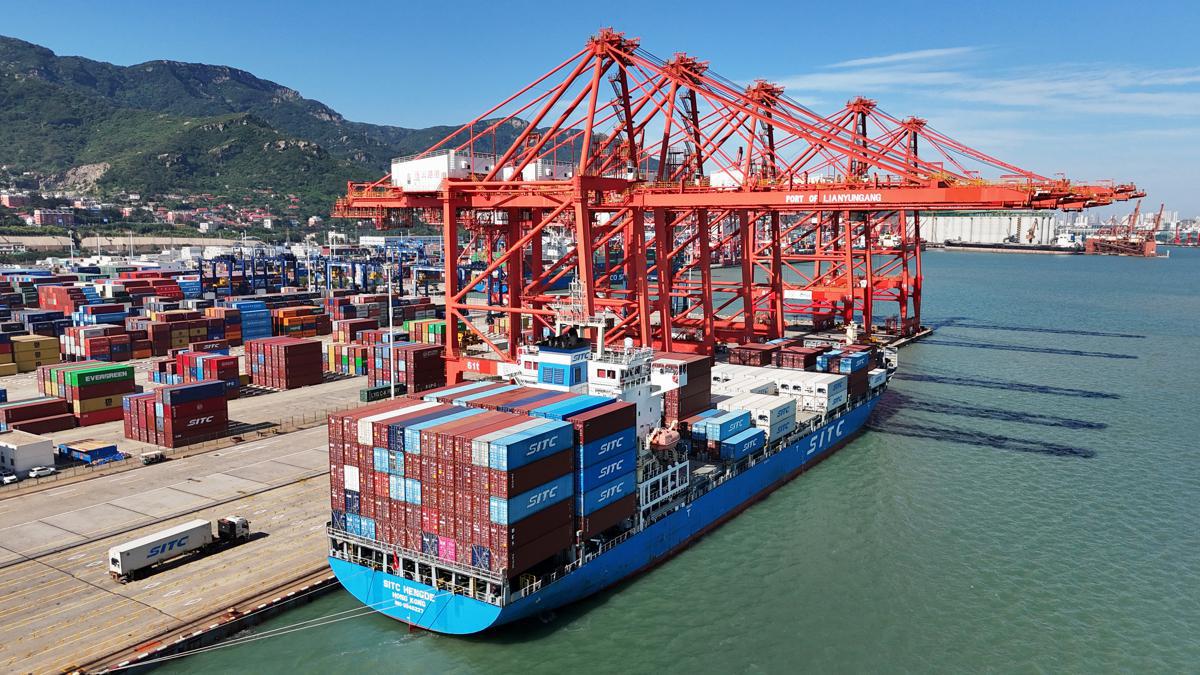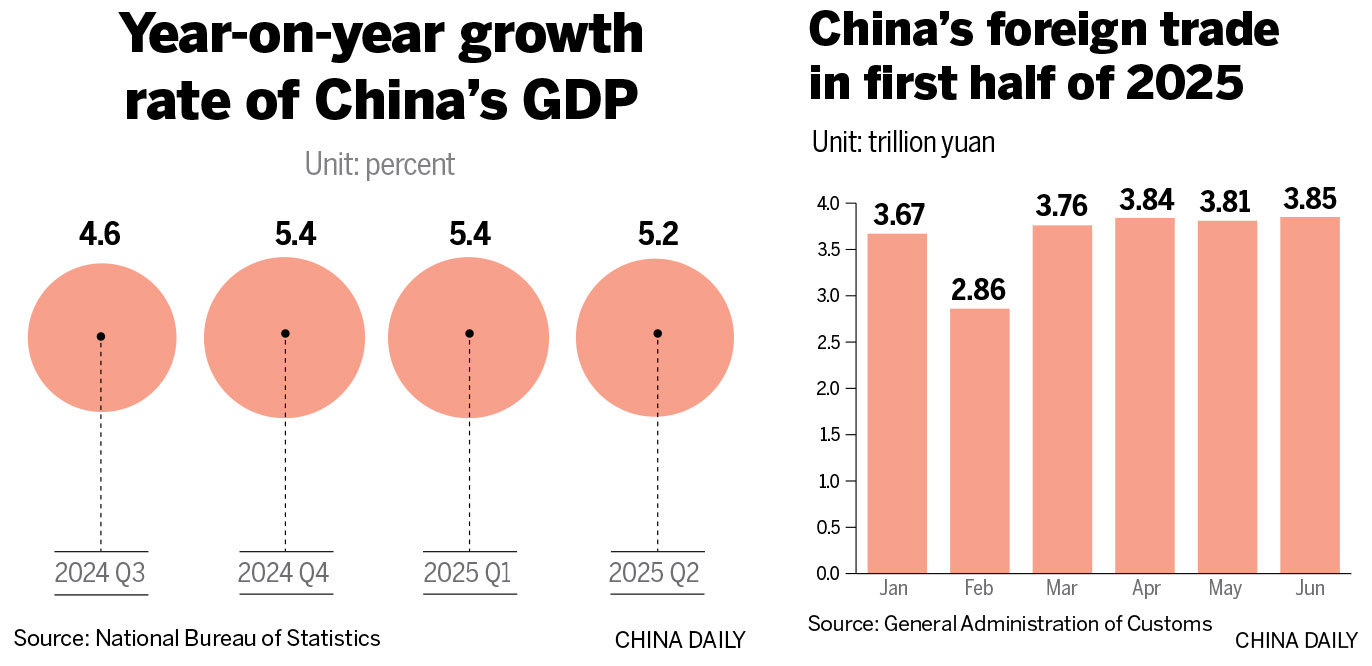Experts and officials see economic momentum continuing amid policy, domestic demand

The Chinese economy expanded 5.3 percent year-on-year in the first half of 2025, official data showed on July 15, defying mounting global headwinds and providing a solid footing for achieving the full-year growth target of around 5 percent.
Analysts said they expect the economic growth momentum to continue in the second half of the year, given the government’s ample policy room and tools, the steady recovery in domestic demand, and the resilience in exports.
Looking ahead, they said that China’s top leadership may sharpen its focus on maintaining economic stability and restoring market confidence, with strong fiscal stimulus and further monetary easing to stimulate domestic demand and cushion against external headwinds.
National Bureau of Statistics data showed that China’s GDP increased 5.2 percent year-on-year in the second quarter of this year, cooling from a 5.4 percent growth in the first quarter.
“The Chinese economy posted a solid first half, supported by resilient exports,” said Louise Loo, lead economist at British think tank Oxford Economics.
“Sequential GDP growth moderated in the second quarter, but still allowed first-half growth to reach 5.3 percent — comfortably above the official 5 percent full-year target.”
China’s value-added industrial output grew 6.8 percent year-on-year in June, after a 5.8 percent rise in May, while retail sales — a key measurement of consumer spending — rose 4.8 percent year-on-year in June, down from 6.4 percent growth in May.
Loo noted that retail sales growth slowed in June, reflecting weak organic spending momentum following the temporary boost from the “618” shopping festival. She said that fiscal policy is expected to take the lead in supporting growth.
According to NBS data, final consumption accounted for 52 percent of China’s economic growth in the first half of the year. In the second quarter, final consumption contributed 52.3 percent to economic growth, slightly higher than the figure in the first quarter.
“These figures indicate that domestic demand — particularly consumption — remains the primary driver of GDP growth,” Sheng Laiyun, deputy head of the NBS, said on July 15 at a news conference in Beijing.

NBS data shows retail sales rose 5 percent year-on-year in the first half of 2025, against 4.6 percent expansion in the first quarter.
Ming Ming, chief economist at CITIC Securities, said the second-half policy efforts are likely to focus on innovating policy tools.
“Efforts will likely target key areas in the economy, including supporting property destocking, further developing the service sector, and boosting consumption,” he said at a China News Service-hosted forum in Beijing on July 15.
Wang Qing, chief macroeconomic analyst at Golden Credit Rating International, said that China will likely step up “unconventional” countercyclical adjustments in the second half to cushion external pressures.
Speaking at a Beijing news conference on July 14, Wang Lingjun, vice-minister of the General Administration of Customs (GAC), said that in the face of rising protectionism and growing geopolitical uncertainty, the country’s increasingly diversified and stable trade structure has strengthened its ability to mitigate external risks and maintain the growth momentum of its foreign trade.
“From the perspective of export markets, both traditional and emerging economies saw growth in the first half,” Wang said, emphasizing that cooperation should remain the defining theme of China-United States trade ties and play a key role in restoring fairness and openness to the global trading system.
He said that China’s trade with over 190 countries and regions registered growth between January and June, with as many as 61 trading partners each recording trade above 50 billion yuan ($6.97 billion) — five more than in the same period last year.
China’s foreign trade in the first half was up 2.9 percent year-on-year at 21.79 trillion yuan, statistics from the GAC showed.
Exports increased 7.2 percent year-on-year to 13 trillion yuan during this period, while imports declined 2.7 percent to 8.79 trillion yuan.
Lyu Daliang, director of the administration’s department of statistics and analysis, said that Chinese exporters are capitalizing on the global energy transition by expanding their supply of customized, green, and high-value products, accelerating efforts to tap into new sectors and emerging markets.
Zhao Zhongxiu, president of the University of International Business and Economics in Beijing, said that China’s ongoing shift toward digital and green manufacturing is reshaping its industrial landscape.
China’s trade with economies participating in the Belt and Road Initiative rose 4.7 percent year-on-year to reach 11.29 trillion yuan from January to June, accounting for 51.8 percent of its total foreign trade, according to the GAC.
Contact the writers at ouyangshijia@chinadaily.com.cn


